wavfile is a simple sound library for use in CSE 20211. This library allows you to generate arbitrary sound waveforms in an array, then write them out to a standard WAV format file, which can then be played back by almost any kind of computer.
Note: As a courtesy to others in the course or the lab, please use headphones when working with sounds.
Digital Sound Primer
A computer generates digital sounds by creating a digital waveform. A waveform is simply a sequence of digital values that describe how a speaker is to be physically pulsed by an digital-to-analog (DAC) converter. Positive values in the waveform indicate the speaker is to be pushed slightly outward, creating positive air pressure, while negative values indicate the speaker is to be pulled slightly inward, creating negative air pressure.
The sampling rate of a digital sound indicates how many digital values are used per second of playback. The standard for CD-quality sound is a sampling rate of 44.1KHz. The volume of a digital sound is simply the amplitude of the waveform: bigger changes mean louder sounds.
The character and quality of a sound is entirely described by the shape of its waveform. Try clicking on the waveforms below to see what they sound like. A sine wave is smooth and open, like a flute. A square wave is piercing, like a smoke alarm. A triangle wave sounds rather brassy. The random wave sounds like white noise.
A sound with a regular pattern has a fundamental frequency which is the number of peaks in the waveform per second. The sine, square, and triangle waves above all have a frequency of 440Hz, which is a concert-A pitch. (Note also that the frequency is not the same as the sampling rate.)
Most sounds in the real world are not as clean and simple as the waveforms above. Instead, they are a sum of multiple waveforms at different frequencies. Musical instruments tend to produce a strong waveform at the pitch actually played. This is known as the fundamental frequency. At the same time, they also produce quieter sounds at integer multiples of the fundamental frequency, known has harmonics.
For example, click on the three sounds below. The first is a sine wave at 440Hz. The second adds a harmonic at 880Hz. The third adds another harmonic at 1760 Hz. If you listen carefully, you will see that the sounds with more harmonics are more pleasant and more realistic. (I think it sounds like a pipe organ.)
Getting Started
It is very easy to generate waveforms like those above to create digital sounds and (eventually) music. To get started, download the following files:
And compile them together as follows:
Then, run the example program:
The program creates a file called sound.wav. To play back the file on Linux, use the play command:
How it Works
The sound library only has three functions:
wavfile_open creates a new file whose name is given by the first argument. It automatically puts the standard WAV header into the file for you. If successful, it returns a pointer to a FILE object. If unsucessful, it returns null.
wavfile_write writes data to an open file. The first argument must be a pointer to a FILE object returned by wavfile_open. The second argument is an array of waveform data, and the third argument is the number of samples to write. This function may be called multiple times to add more sounds to an open wavfile.
wavfile_close completes writing to a wavfile. It is required to call wavfile_close when your sound is complete, otherwise the file will not be usable.
Finally, the header contains a constant WAVFILE_SAMPLES_PER_SECOND which indicates how many samples are in a waveform per second of playback.
Example Program
The program example.c creates a simple wavfile that plays a sine-wave for one second. It works as follows:
First, an array of shorts is created to hold a waveform that will last for two seconds:
short waveform[NUM_SAMPLES];
For clarity, we define a few variables to indicate the frequency and volume of the sound. 440Hz is a concert A pitch, and the volume of the waveform is simply the amplitude, which can be up to 32768.
int volume = 32000;
Then, we fill the array with a sine wave of the desired frequency:
for(i=0;i<NUM_SAMPLES;i++) {
double t = (double) i / WAVFILE_SAMPLES_PER_SECOND;
waveform[i] = volume*sin(frequency*t*2*M_PI);
}
Finally, we use the wavfile library to write out the waveform to a file:
wavfile_write(f,waveform,length);
wavfile_close(f);
Using the simple sound library, writing out the sound file is easy. All of the challenge lies in constructing a waveform that plays the desired sound.
转自:
https://www3.nd.edu/~dthain/courses/cse20211/fall2013/wavfile/
|
作者:虚生 出处:https://www.cnblogs.com/dylancao/ 以音频和传感器算法为核心的智能可穿戴产品解决方案提供商 ,提供可穿戴智能软硬件解决方案的设计,开发和咨询服务。 勾搭热线:邮箱:1173496664@qq.com weixin:18019245820 市场技术对接群:347609188 |

|



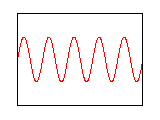
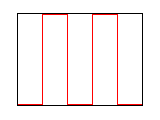
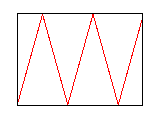
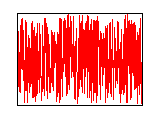
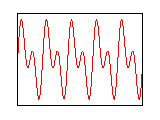
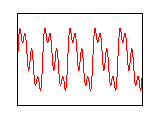


【推荐】编程新体验,更懂你的AI,立即体验豆包MarsCode编程助手
【推荐】凌霞软件回馈社区,博客园 & 1Panel & Halo 联合会员上线
【推荐】抖音旗下AI助手豆包,你的智能百科全书,全免费不限次数
【推荐】博客园社区专享云产品让利特惠,阿里云新客6.5折上折
【推荐】轻量又高性能的 SSH 工具 IShell:AI 加持,快人一步
· 微软正式发布.NET 10 Preview 1:开启下一代开发框架新篇章
· 没有源码,如何修改代码逻辑?
· PowerShell开发游戏 · 打蜜蜂
· 在鹅厂做java开发是什么体验
· WPF到Web的无缝过渡:英雄联盟客户端的OpenSilver迁移实战